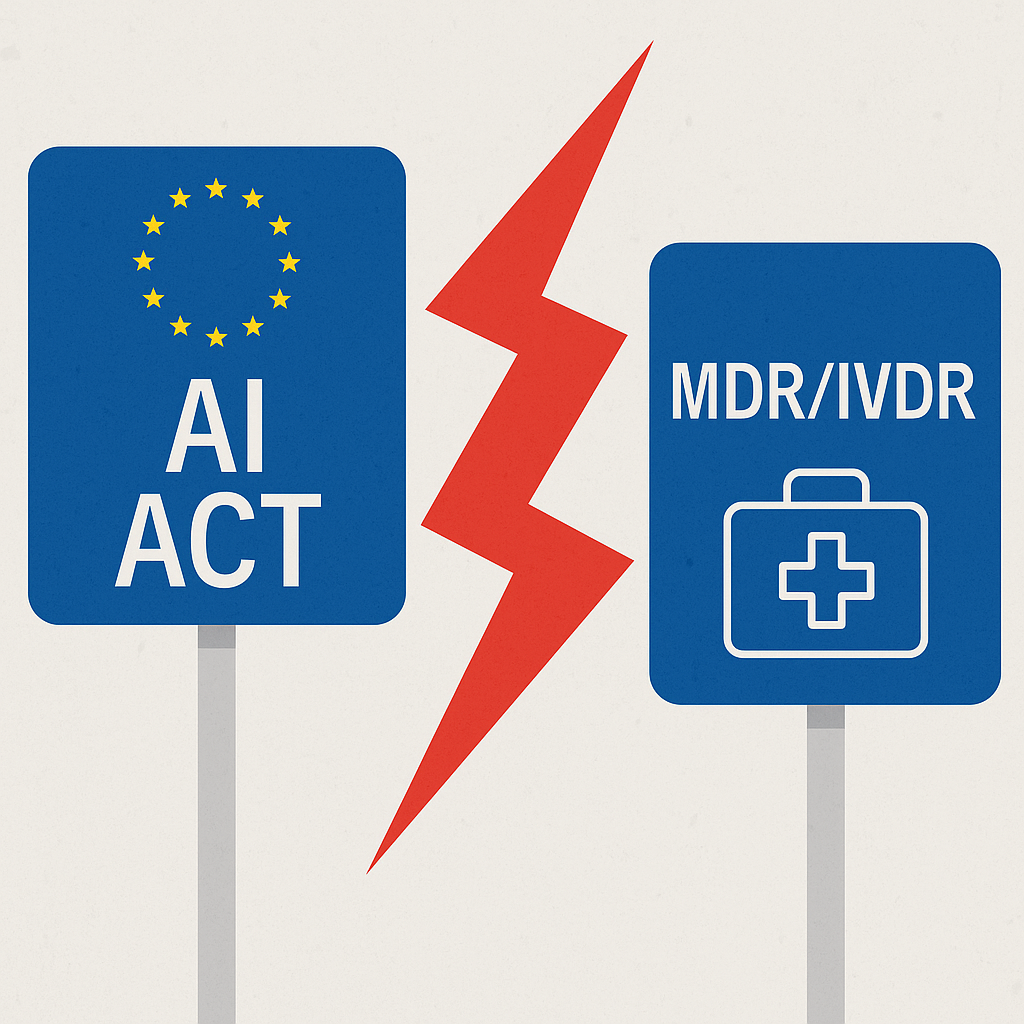The EU wants to be the global leader in AI and in medical technology. Unfortunately, its own flagship regulations are on a collision course. Europe’s innovators are stuck in the middle.

One year after the EU AI Act entered into force, the continent’s medtech trade body MedTech Europe is calling for a four-year delay in its application to medical technologies. Why? Because a single AI-driven device could now be regulated twice: once under the Medical Devices Regulation (MDR) or In Vitro Diagnostics Regulation (IVDR), and again as a “high-risk” system under the AI Act.
That means two sets of conformity assessments, two quality management systems, two mountains of technical documentation and double the post-market reporting burden. For lean startups, this isn’t just red tape. It’s a growth chokehold.
The dual burden problem
At first glance, the two regimes seem complementary. Both care about safety, risk management, and continuous monitoring. In reality, their definitions, processes, and paperwork don’t line up.
An AI-powered imaging tool could be a relatively low-risk Class IIa device under MDR, yet automatically high-risk under the AI Act. That triggers an entirely separate certification pathway, with no guarantee that an MDR-designated Notified Body can handle AI Act conformity checks.
Capacity is already stretched thin. There are too few Notified Bodies for MDR/IVDR demand. Adding AI Act assessments without clear rules risks a regulatory gridlock where ready-to-market products sit idle.
Collateral damage: clinical research
The AI Act could even hit innovation before products launch. MedTech Europe warns that clinical investigations required to generate evidence for MDR/IVDR approval aren’t explicitly exempt from AI Act obligations.
In practice, that could delay or derail trials as companies wrestle with a second compliance framework mid-development. Given that several EU Member States have already missed the AI Act’s August 2025 deadlines for national authorities and sanctions, readiness is questionable at every level.
Why this matters for investment
For founders, this uncertainty means longer timelines, higher legal and compliance costs, and greater risk. All red flags for investors. For VCs, it erodes capital efficiency and predictability, making US or Asian markets look more attractive for AI-medtech plays.
My position: safety first, but smarter regulation
Patient safety is non-negotiable. The AI Act’s principles of transparency, accountability, and risk management are sound. But doubling up on processes that don’t align will drain resources from where they matter most: clinical validation and safe deployment.
Instead of overlapping statutory frameworks, Europe should consider an industry-led code of practice for AI in healthcare, modelled on the ABPI Code of Practice in UK pharma marketing. Such a code could set high, enforceable standards for AI safety and ethics, developed and policed by industry bodies, with regulators holding a backstop role.
This approach would keep standards high, compliance practical, and innovation alive without making startups navigate two regulatory mazes at once.
Founder and investor playbook
Founders:
- Map your AI features against both MDR/IVDR and AI Act risk classifications now.
- Build a “dual compliance” roadmap showing how you’ll meet both sets of requirements in parallel.
- Use this as a de-risking narrative in investor pitches; proactivity here is a credibility boost.
Investors:
- Add a “regulatory burden scorecard” to due diligence.
- Prioritise teams with in-house regulatory expertise and realistic dual-compliance budgets.
- Recognise that a slightly less flashy product with a watertight compliance plan may outperform in this environment.
Takeaway:
The EU’s ambition to lead in AI and medtech is laudable. But until the AI Act and MDR/IVDR are harmonised, ideally through an industry-led, safety-focused code, Europe’s most innovative startups will spend more time in the compliance maze than in the clinic.
Let’s keep this conversation going
If you’re a founder, investor, or policymaker navigating the AI Act–MDR/IVDR clash, I’d like to hear your perspective. Are you already planning for dual compliance, or do you see a better path forward?
Follow Disrupting Healthcare for more EU medtech analysis and practical strategies for turning regulatory headwinds into competitive advantage.
This content has been enhanced with GenAI tools.




